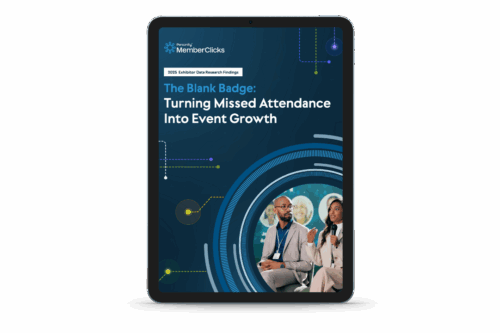For associations and other membership-based organizations, it’s no secret that the key to long-term success involves understanding their members. Anyone who’s ever spoken to long-time members who didn’t renew their memberships often learns that they felt like they weren’t valued or that the membership wasn’t adding value to their life.
Maybe they felt they were treated as just one member among many rather than as an individual. Or perhaps they didn’t feel engaged by the organization’s programming. While no association is expected to read their members’ minds, associations have access to a lot of data that they could have used to prevent members from feeling that way.
That’s just one reason why member profiles are invaluable. Think of them as tools for organizations seeking to learn more about what appeals to their members and a way to boost retention in the long run. So, what makes a good member profile and how can you use association member profiles to better manage members and keep them involved year after year? We’ll walk you through the best practices around membership profiles.
What are Member Profiles?
Member profiles are informational profiles about each individual member of an organization. Some associations only have membership profiles that are visible to their internal staff as part of their association management software (AMS). Others have profiles that the members can see and change themselves and which can be shared with other members in the organization in a membership portal.
Member profiles allow organizations to gather basic information on members all in one place. This information can be anything from personal or contact information to information about the association events they attended, committees they sat on and educational programs they participated in. For associations, membership profiles make it easy to keep track of members and their interests. They also can be used to spot trends in membership behavior, develop new programs around member interests or send customized emails.
But membership profiles also benefit members. Member profiles provide members with a place to share relevant achievements and certifications, their title and workplace and other interests. This makes it easier to network and build connections within the member community both online and in-person. The best part? They’re often easy for members to edit and update things like new employment or contact information.
A comprehensive AMS should offer self-serve options for members to update their profile details whenever they want, ensuring that member information remains accurate at all times.
10 Key Components of Member Profiles
Wondering what the most important parts of an association member profile are? We dissect them for you!
- Name: This one is obvious! Member names are the primary way you find them in your database. Make sure to include their username for your message boards, preferred name and full name.
- Profile Photo: Not every organization has photos of all their members as part of their membership profile but it’s extremely helpful if you do. You’ll be more likely to recognize key members at the next event. Consider asking for a photo from all new applicants.
- Occupation: Where do they work? What is their job title? This information is important whether you’re a professional association or a chamber of commerce.
- Contact Information: The more contact info you have for your members, the better. Try to get their email, phone number and address so that you can easily contact them by whichever method works best.
- Location: If your organization has members from across the country or the world, knowing where they live will help you organize regional events or initiatives.
- Social Media Handles: Being able to connect with your members on social media can help you build your presence on different platforms – and leverage your members in your member acquisition outreach.
- Membership Status: Is a member’s membership status active or did they lapse? Being able to quickly check or pull a report with everyone whose membership is expected to lapse next month can be helpful. Make sure it says when the membership will expire so members know when they’ll need to renew.
- Invoices: A great membership profile has many functions. Linking your members’ receipts or invoices for membership fees to their profile makes it easy for them to find receipts for reimbursement or tax purposes and allows them to pay invoices seamlessly.
- Registered Events/Activities: Being able to see which events your members went to is important. You can catch members who are becoming less engaged or more engaged this way.
- Educational History and Certifications: What’s your member’s educational background? Depending on your organization, that could be important. It can help you connect members for networking based on their background or more easily find volunteers for a mentorship program that are a good fit.
Best Practices for Leveraging Member Profile Data
In order to make the most of the information collected in member profiles, organizations need to understand the best ways to update, organize and leverage it.
With an effective membership database, organizations should be able to follow these best practices:
Ensure that member information automatically updates in profiles.
Automatically updated information will save you a lot of time. For example, ensuring that membership statuses or types automatically updates in every member’s profile saves a lot of manual work.
Other information you might want to have update includes contact information changes made through your AMS. When your members update their information with you, you should only have to input it into one place. Anything else is a make-work project that you’ll inevitably get behind on, leading to out of date member profiles.
Add relevant notes to individual member profiles.
Ever had a great conversation with a member that you wanted to make sure you wouldn’t forget or that everyone else in your organization would know about before contacting them? Whether it’s that they said they want to join the board next year or that they mentioned they were unhappy with their membership, adding a note to individual member profiles can be invaluable.
Not only can you ensure that members who have complained about getting asked too often to donate don’t get asked again – but these notes also help create institutional memory in case there is turnover. The person who originally talked to them might have left years ago but the note that they added to their file can help ensure that member is treated like an individual and not a number for years to come.
Make it easy for members to renew their membership through their profiles.
The best use of a membership profile is as a portal where members can do all the administrative work of being a member – whether they’re updating their information or renewing their membership. By centralizing the place where they renew their membership, it makes it easier for them to do it. They don’t need to figure out which portal or page they should be renewing on.
That also simplifies things for you since you don’t need to input or upload their renewal when they do it through a generic renewal page. When it’s done through their membership profile, it immediately gets updated across their records – no extra work for your team!
Organize member profiles by types, such as current members and prospective members
Segmentation is the bread and butter of effective association membership marketing. You can use it to email members who recently canceled their memberships or didn’t renew with a tailored message. It allows you to segment invites by membership level if some members get special privileges or invites to exclusive events.
Being able to segment members or prospective members helps organizations send more tailored and relevant communications to each of their members. And that’s a good thing. It makes them feel like you’re talking directly to them. A great member profile should be able to do this.
View and glean insights from member engagement metrics
Data is incredibly powerful. As an association you can find out a lot by data mining such as how engaged your members are, the average length of a membership, how often members log in and how many events people go to every year on average. Membership profiles that list this information for individual members while also allow you to download that information from your membership as a whole so you can segment your messaging is invaluable.
You can even potentially identify members who are at risk of not renewing their membership by looking for things like low attendance at recent events or low engagement online. Then, you can intervene to engage that member before it’s too late.
Do your membership profiles not do this?
Unfortunately, all member profiles aren’t created equal. MemberClicks, however, is a good example of membership profiles that offer all these functionalities. MemberClicks’ membership database solution gives organizations the features they need to follow all the best practices listed above.
Once your profile fields are set, connect them to a public-facing online directory so members can find each other quickly
Optimizing the Member Experience with Member Profiles
Membership profiles offer lots of opportunities for better understanding an organization’s individual members and membership as a while. From being able to understand a member’s relationship with your organization at a glance to leveraging membership wide data to find members at risk of not renewing to engage them better, association member profiles are one of the secrets to success.
By optimizing member profiles and making them easy for members to update, associations and other membership-based organizations can improve their relationship with their members and boost retention. That will secure reliable revenue for your organization for years to come. It will also lead to happier members.
Additional resources on member management:
- How To Choose the Right Membership Database in 5 Steps | MemberClicks
- 9 Ways to Welcome New Members to Your Organization | MemberClicks
- Your Online Membership Directory: Benefits + 5 Examples – MemberClicks
- 9 Member Appreciation Ideas to Retain More Members | MemberClicks
- 11 Tips for Driving A Better Member Experience | MemberClicks
















